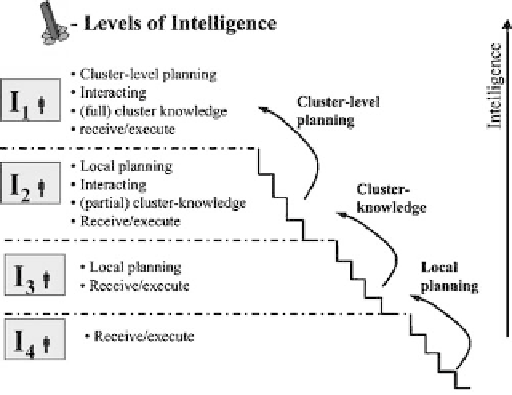Environmental Engineering Reference
In-Depth Information
intelligent multiagent systems would have similar challenges. Concepts from
collective intelligence [
144
] could be applied to the design of the goals for the
agents so that they are “aligned” with the global goals, and are “learnable”
in that agents could see how their behavior affects their utility and could
overcome unforeseen issues.
Satellite intelligence was considered initially by Schetter et al. [
133
]. They
performed comparisons on several high-level agent organizations, along with
varying degrees of satellite intelligence, to assess analytically their impact
on communication, computation, performance, and reliability. The results
indicate that an autonomous, agent-based design provides increased reliability
and performance over traditional satellite operations for the control of con-
stellations.
The following sections discuss some of the approaches to using intelligent
multiagents for constellation control.
9.5.1 Levels of Intelligence in Spacecraft Agents
Based on the sum of spacecraft functions, four levels of spacecraft intelligence
have been identified [
133
], where I1 denotes the highest level of intelligence
•
The spacecraft-level agent I4 represents the most “unintelligent” agent. It
can only receive commands and tasks from other spacecraft-level agents
Fig. 9.2.
Identification of spacecraft-level agents based on levels of capable
intelligence
2
2
Reprinted from Artificial Intelligence, 145(1-2), Thomas Schetter, Mark
Campbell and Derek Surka, Multiple agent-based autonomy for satellite constel-
lations, page 164, Copyright (2003), with permission from Elsevier.

